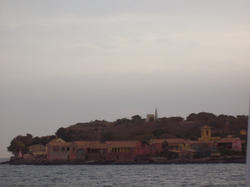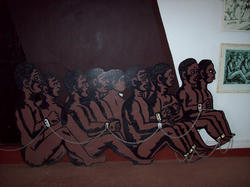Africa's Dark Past
The Slaves' Journey: Goree Island, James Island, and Juffureh
I wasn't even sure what to call this section. I kept putting off writing this part over and over again because it’s the hardest part to write about, the hardest part to see. So many emotions swept through me when I visited these places and thought about the history that exists here. I felt sad, disheartened, sometimes there was an ache in my chest. I felt anger and rage at the atrocities that existed, and love for the people who lived and died through them. And then there is the realization that if not for what these people (and others like them) went through, I personally, would not be standing here. As an African American, I wouldn’t exist, none of us would...if slavery in Africa had not been a fact of life. It is our heritage.
Here in America, many of us have traced the steps of slaves who lived here, through the underground railroad and other such places. And right here in the middle of Maryland, overlooking the Potomac River, our house stands on former plantation lands. But it was a new feeling of being even closer to where part of the slave trade actually began; walking through doorways where just a few centuries earlier, terrified Africans were thrown into stone prisons just hours after being dragged from their homes, knowing not what fate faced them; and being forced to board ships that carried them away from their families and their countries to become beasts of burden. But these places also bring hope, as you will see in the sculpture that states these words, "Never Again."
Goree Island, Senegal
Goree Island, off the coast of Dakar, (like James Island off the coast of The Gambia) is one of the places that the captives were held before the large sailing ships picked them up to begin their voyage to other countries of the slave trade.
James Island Museum, The Gambia
I regret now not actually visiting James Island, but we did go through it's museum in Juffureh. The next few pages of the website will take you there, as well as to Goree Island, and the small village of Juffureh, where the actual descendents of Kunte Kinte still live.

